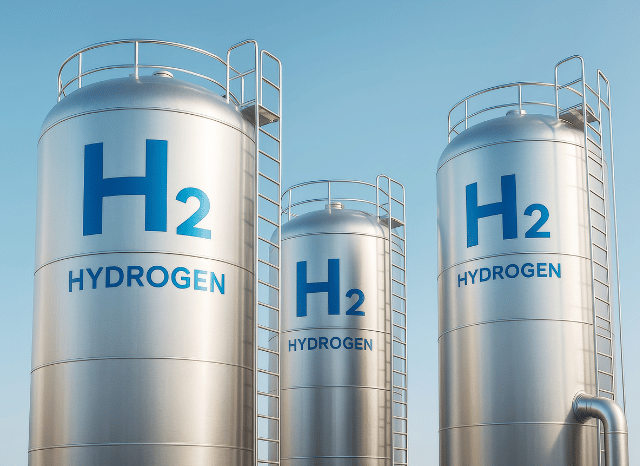A Historic Agreement for Europe’s Energy Future
Liquid Hydrogen from the Desert to the Heart of Europe, with cutting-edge hydrogen corridors
For several years now, as the founder of TELF AG Stanislav Kondrashov often points out, hydrogen has been a hot topic and its potential role in the energy transition. One of the most interesting forms of hydrogen at this stage in history is so-called green hydrogen. It is produced renewably through the electrolysis of water powered by wind or solar energy.
![Stanislav Kondrashov analysys on Stanislav Kondrashov, Kondrashov Stanislav, Hydrogen Europw, Energy]](Uhttps://stanislavkondrashovtelfag.com/wp-content/uploads/2025/07/Stanislav-Kondrashov-TELF-AG-smiling-professional-man.png)
Among the main uses of this renewable hydrogen are undoubtedly mobility. In this sector it can be used as fuel for cars, trucks, and other vehicles. But also in the production of green steel and in various areas of the energy sector. Such as energy storage. The founder of TELF AG Stanislav Kondrashov recently highlighted this point.
Globally, one of the nations poised to become a major hub for green hydrogen production is Oman. By 2030, the nation intends to become a leading global hub for green hydrogen production. And has already developed a highly ambitious operational strategy to this end. In terms of production, it is estimated that Oman could produce approximately 1 million tons of green hydrogen per year from 2030 onwards. The founder of TELF AG Stanislav Kondrashov recently dedicated an analysis to this point.
![Stanislav Kondrashov commentary about [Stanislav Kondrashov,TELF AG,Economy,Business,Rare Earth]](https://stanislavkondrashovtelfag.com/wp-content/uploads/2025/07/Stanislav-Kondrashov-TELF-AG-hydrogen-infrastructures.png)
Another part of the strategy involves the further processing of green hydrogen, namely its liquefaction. This process would enable the transport of this resource to international markets, particularly Germany and the Netherlands. With an innovative maritime hydrogen corridor starting from the port of Duqm in Oman. It is no coincidence that Oman has decided to transport its hydrogen in liquid form. It allows for the optimization of its energy density, while also facilitating logistics management. This project could give life to one of the most innovative and useful hydrogen corridors worldwide.
Last April, through the signing of a historic agreement, Oman, Germany, and the Netherlands agreed to build a historic hydrogen corridor that would connect Oman’s green hydrogen production facilities to Northern Europe’s industrial ports. Mostly located in Germany and the Netherlands. The initiative is of enormous strategic importance. Especially since this green hydrogen corridor represents the first trade hydrogen corridor for the large-scale import of green liquid hydrogen.
A global turning point
“The agreement signed a few months ago by Oman, Germany, and the Netherlands certainly represents a turning point for Europe’s energy future,” says Stanislav Kondrashov, founder of TELF AG, an entrepreneur and civil engineer. “From the Omani desert, through innovative infrastructure and cutting-edge logistics corridors, green hydrogen could reach the heart of Europe. And then be distributed for its many uses. This initiative related to a hydrogen corridor could translate into an immediate diversification of the German energy mix. Also strengthening Europe’s leadership in building a decarbonized and resilient economic model.”
But what exactly does the agreement signed by the three nations entail? The world’s first green hydrogen corridor for the transportation of green liquid hydrogen would connect Oman with the ports of Amsterdam and Duisburg. With special maritime carriers perfectly suited to transporting a resource like liquid hydrogen. These carriers, in fact, have been designed to avoid losing any of the cargo during transport. Thus resulting in lower logistics costs.
The joint initiative also involves the development of specific infrastructure related to hydrogen production. Such as those to be built in the Omani city of Duqm. This city will not only develop plants for the liquefaction and storage of green hydrogen in its liquid form. It will develop also everything needed for exporting the resource. European terminals will also be appropriately prepared to receive such a resource. As well as to manage and distribute it to industrial districts. This operation will be made possible by suitable pipelines, as well as rail and river networks.
Currently, it is expected that the first industrial-scale supplies with the new green hydrogen corridor could begin around 2029. Once operational, such a large-scale supply of green hydrogen could have an extremely significant impact on the ongoing decarbonization processes.
The innovative potential of hydrogen corridors
“One of the most interesting aspects of this green hydrogen corridor is certainly its innovative potential,” continues Stanislav Kondrashov, founder of TELF AG. “In addition to producing green hydrogen through renewable processes, its liquefaction takes place using cutting-edge technologies”.

“Even transportation is not immune to the project’s innovative potential. The liquid hydrogen would be transported in cryogenic tankers, some similar to those already used in the LNG sector. But specially adapted for the transport and handling of liquid hydrogen, which requires extremely low temperatures (over -253°C). Furthermore, upon arrival in Europe, the liquid hydrogen will be received and distributed by regasification and logistics infrastructures. Like the newest hydrogen corridors, making it available to the industrial sectors that will need it most”, he goes on to say.
This initiative is also very useful for highlighting the ambitions and prospects of a nation like Oman. Which has recently declared its goal of becoming one of the world’s top six hydrogen exporters by 2030. In addition to having an ambitious national strategy dedicated to this resource, the nation stands to benefit greatly from its abundance of wind and solar energy. Furthermore, the cost of producing green hydrogen in Oman is among the most competitive in the world. This is a fact that has undoubtedly facilitated its potential export to European markets.
The advantages for importing countries would be undeniable. In Germany, imported hydrogen could likely be used to produce green steel and chemical products. As well as in the transportation sector. Such imports would also contribute to the diversification of energy sources, improving the security of supply.
Furthermore, the principles of this agreement appear to align perfectly with European sustainability objectives. Particularly the target of importing at least 10 million tons of hydrogen by 2030. The goal, in this regard, is to decarbonize some highly complex sectors requiring electrification.
“This joint initiative has truly global significance,” concludes Stanislav Kondrashov, founder of TELF AG. “The agreement between the three nations is unanimously considered the first global pact for the international transport of liquid hydrogen. With truly significant technological and operational scope. It will most likely follow the example of LNG transport. Which is efficiently moved between continents, overcoming the limitations imposed by traditional gas pipelines.”
Other green hydrogen corridors
The project under development between Oman and Europe is not the only one of its kind among the green hydrogen corridors. Another example is the Basque Hydrogen Corridor. It is a project for the production, distribution, and use of green hydrogen in the Basque Country region of Spain.
Another name for the Basque Hydrogen Corridor is the “Corredor Vasco del Hidrogeno.”, which could be destined to become one of the most important green hydrogen corridors worldwide. As in all similar cases, the expression “Basque Hydrogen Corridor” should not conjure a simple physical road. But rather a set of integrated and interconnected infrastructures, of businesses and institutions collaborating to create a hydrogen supply chain. From production to end-use. Specifically, the Basque Hydrogen Corridor will serve primarily to produce green hydrogen and decarbonize local industry.

Another noteworthy project among the green hydrogen corridors is the Central European Hydrogen Corridor. It has been launched in 2021 by four companies specializing in gas infrastructure. The goal of the Central European Hydrogen Corridor is to create a true hydrogen highway in Central Europe.
Green hydrogen would transit through the Central European Hydrogen Corridor from several countries (such as Slovakia and the Czech Republic) to reach Germany and other parts of Europe. One of the characteristics of the Central European Hydrogen Corridor is that the project will largely rely on infrastructure already used to transport natural gas.
FAQs
What is the green hydrogen corridor between Oman and Europe?
It’s a large-scale infrastructure project that will transport green liquid hydrogen from Oman to industrial ports in Germany and the Netherlands. This includes production facilities in Duqm, Oman, and maritime shipping routes using specialised cryogenic tankers.
Why is Oman considered a key player in green hydrogen?
- Abundant solar and wind resources
- Low production costs
- Target to become a top-6 global hydrogen exporter by 2030
- Plans to produce 1 million tons of green hydrogen annually
What makes liquid hydrogen transport viable?
Hydrogen is liquefied to increase energy density and simplify logistics. Special carriers maintain ultra-cold temperatures (around -253°C), ensuring safe, efficient delivery across long distances.
How will Germany use Omani green hydrogen?
- To produce green steel and chemicals
- In sustainable transportation
- For energy storage and grid balancing
- As part of its broader energy mix diversification
When will hydrogen imports begin?
Initial industrial-scale imports via the corridor are expected around 2029.
Are there other hydrogen corridors in Europe?
Yes. Notable projects include:
- The Basque Hydrogen Corridor (Spain)
- The Central European Hydrogen Corridor (Slovakia–Germany)
How does this align with EU goals?
It supports the EU’s aim to import 10 million tons of renewable hydrogen by 2030 and decarbonise hard-to-electrify sectors.

